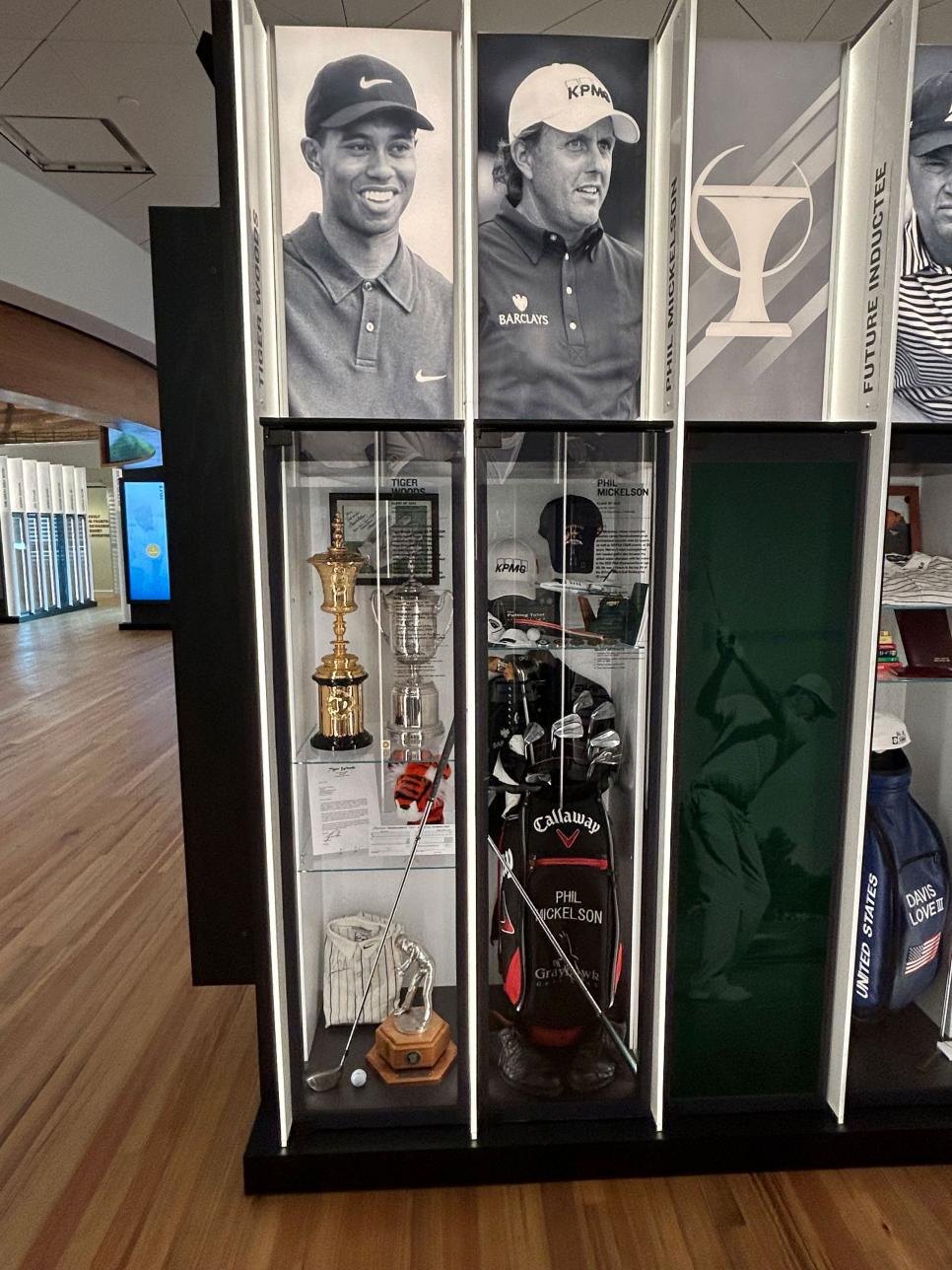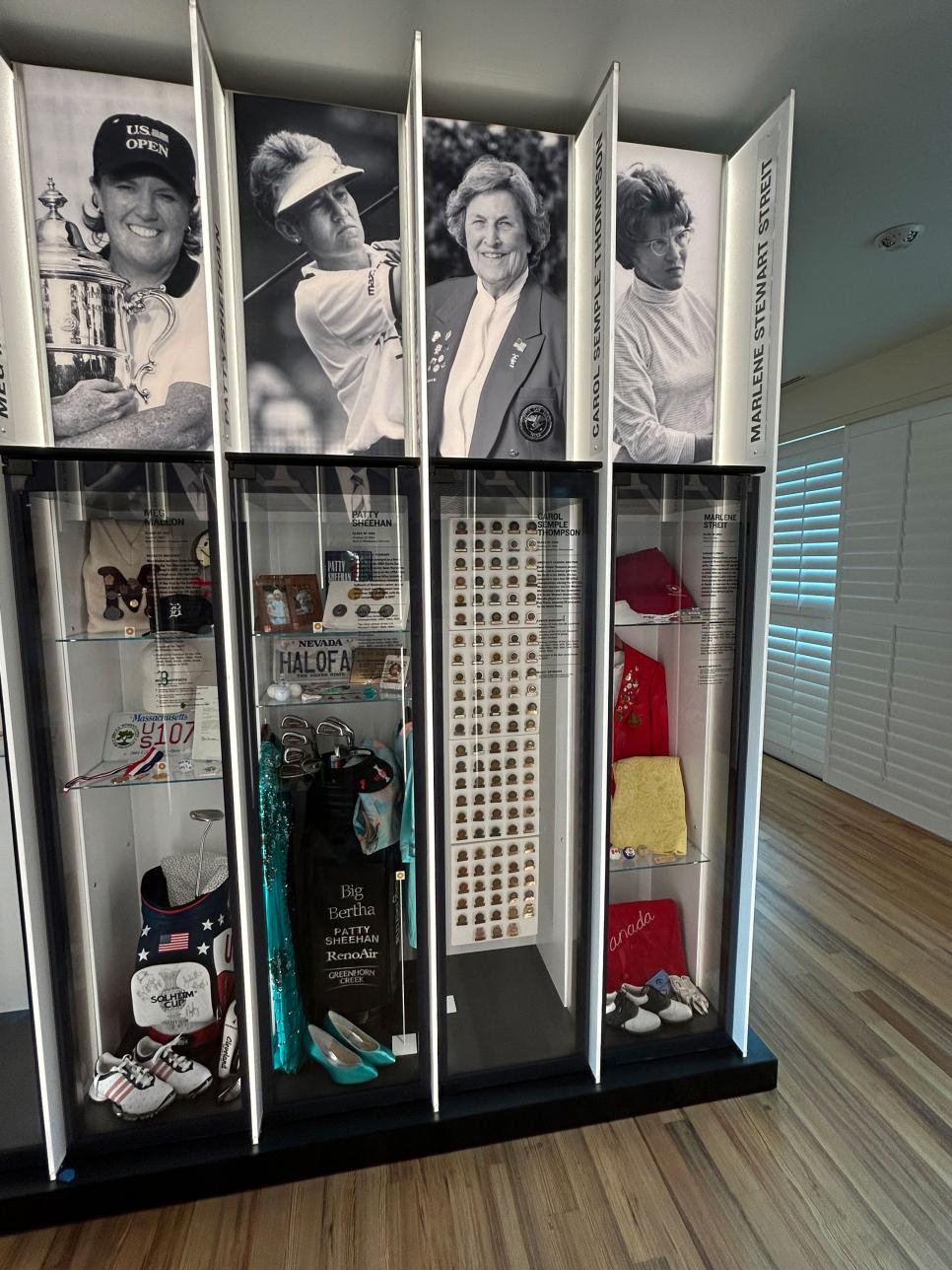A reimagined World Golf Hall of Fame looks to finally thrive in Pinehurst return – Australian Golf Digest

- by Admin
- May 6, 2024

PINEHURST, N.C. — Anxious yet excited best describes the mood of those putting the finishing touches on the latest iteration of the World Golf Hall of Fame. In recent days, a controlled chaos has been taking place at the 9,000-square-foot facility—a three-minute walk from the sprawling clubhouse at Pinehurst Resort and adjacent to the USGA’s newly built Golf House Pinehurst—as the final pieces come together ahead of the formal opening on Friday.
The Hall’s return to the sandhills of North Carolina is a source of pride for an area that calls itself “the cradle of American golf,” with representatives of local and state government set to be among the first group of official visitors. It’s also a mulligan of sorts. It was 50 years ago that the resort opened the original World Golf Hall of Fame building just behind the fifth tee at Pinehurst No. 2. Honoring the game’s greats in an iconic golf locale made sense on paper, but financial issues after a decline in resort guests led to a reorganization in the 1980s that ultimately saw the World Golf Foundation take over operation of the Hall and move it to St. Augustine, Fla., in 1998.
Fast forward more than two decades and a similar circumstance in Florida created the opportunity for the Hall to return to Pinehurst, where the resort has undergone an impressive renaissance. A renovated No. 2 course was named the U.S. Open’s first anchor site with 11 USGA championships overall locked-in to the resort and the governing body creating a permanent “second” headquarters in the region. Renovations to the No. 4 course, as well as the creation of No. 10 course, set to open this month, and the launch of nine-hole par-3 Cradle course, have restored the resort’s reputation as a prime golf destination.
This time around, however, it’s not the resort that’s in charge of the Hall but rather the USGA, which already helped supply the space for the WGHOF inside its new administration facility. USGA officials recently revealed that the governing body also will assume day-to-day operations of the World Golf Hall of Fame from the World Golf Foundation in June.
“It’s kind of natural for the USGA to take over and really be leading the World Golf Hall of Fame going forward,” says Mike Trostel, set to become WGHOF director. The USGA already operates the oldest sports museum in the United States at its Liberty Corner, N.J., headquarters. “So caring for artifacts and telling those kind of stories is really in our DNA,” Trostel says.
More From Golf DIgest Courses Our 10 favorite Pinehurst courses, ranked  Women’s History Money The 20 most consequential moments in women’s golf history, ranked
Women’s History Money The 20 most consequential moments in women’s golf history, ranked  u.s. open U.S. Open 2024: Tiger Woods accepts special exemption to compete at Pinehurst
u.s. open U.S. Open 2024: Tiger Woods accepts special exemption to compete at Pinehurst
Under the new structure, the USGA will manage the artifact collection, the visitor experience and all activities related to future induction ceremonies. The Hall’s Class of 2024—Padraig Harrington, Johnny Farrell, Tom Weiskopf, Sandra Palmer, Beverly Hanson and the 13 LPGA Founders—will be inducted in a ceremony at the new facility June 11, three days before the opening round of the 2024 U.S. Open is played at No. 2.
While the USGA picks up the operational baton, the Hall’s governance structure will remain the same. Current members of the WGF Board of Directors will also sit on a separate Hall of Fame board. Trostel will report directly to the board—which consists of PGA Tour commissioner Jay Monahan, USGA CEO Mike Whan, PGA of America CEO Seth Waugh, R&A CEO Martin Slumbers, DP World Tour CEO Guy Kinnings, LPGA commissioner Mollie Marcoux Samaan, Will Jones of the Masters and Rhett Evans of the GCSAA.
With Pinehurst seeing roughly 1.2 million golfers coming through a year, Trostel believes the Hall has a stronger audience to attract visitors than ever before. “We’re now going to where the golfers will be,” he says. “As people are walking over from the Carolina Hotel, from the Holly Inn, kind of from the town center, to The Cradle or to No. 2, we’re going to have a lot of people come through.”
As for the Hall of Fame’s induction criteria and selection process, that will remain in the control of the board. Currently, there are three categories in which people can be considered for induction: male competitor, female competitor and contributor. Approximately every two years, a nominating committee submits a list of finalists from which a selection committee votes, with any person getting 75 percent approval earning induction.
“We want to make sure that we maintain impartiality on that,” Trostel says. “In the same way the PGA Tour has been very involved with the World Golf Foundation and running that before [in St. Augustine], we will be doing similarly on that side.”
While the USGA doesn’t officially take over operations until June 11, its museum staff has already played a significant role behind the scenes in the re-imagined Hall of Fame. “You know it’s truly a blend of these two collections [USGA and WGHOF], and they’re very complimentary,” says Hilary Cronheim, senior director, USGA Golf Museum and library. “We’ve kind of doubled the stories we can tell and really enhanced not only the professional stories related to these players but also the personal things. And it’s been neat to see that.”
On the first floor of the building sits the USGA Experience, which takes visitors through several of the governing body’s core responsibilities, from running championships to testing golf equipment to turf research and green development. Additionally space will display rotating exhibits.
On the second floor is the Hall of Fame proper, with 170 lockers holding a combined 3,000 artifacts that tell the stories of the various honorees. Each is represented by his or her own locker, a carryover from St. Augustine.

Tiger Woods and Phil Mickelson have lockers side-by-side in the new World Golf Hall of Fame.

The variety of the artifacts in each player locker helps personalize the stories of each Hall of Fame member.

Lockers are set up by era, telling a story of golf’s evolution while honoring its legendary players.
“I fought very much quality over quantity in this one, not trying to overstuff lockers with things that didn’t have meaning,” Cronheim says.
In some instances, the sparseness sends its own message. The only thing in Betsy King’s locker is a bible opened to favorite Old Testament chapter. In Carol Semple Thompson’s locker, a display of 118 USGA competitor badges highlights the fact that the career amateur has played in more USGA championships than any one in golf history.
“I think what we get to do in the Hall of Fame is delve into that personal aspect of things,” Trostel says. “There are still going to 100s of clubs, balls and tees and shoes and shirts, but we also have those personal items, stuffed animals, Legos, soccer balls, a pair of nail clippers in there, quirky little [things]. So to get to know not only the time line of how golf evolved and some of those major moments but you get to know the key characters and what their inspirations were growing up.”
Rather than arrange lockers inducted year, they are organized by eras, helping showcase the game’s development over time along with highlighting the player’s accomplishments.
Visitors can access additional information regarding each locker from an online app as they tour the floor. And interactive multimedia kiosks on both floors provide an engaging way for visitors to spend as much or as little time as they have to emerce themselves in the game’s history.
“The intent with the exhibit design was recreating a locker room but also make it feel like a museum that’s worthy of these members,” Cronheim says. “I think we’ve succeeded in that and giving the members their due in how we’re presenting their life and their legacy.”
This article was originally published on golfdigest.com
The Latest News
-
December 23, 2024Australian tennis star Max Purcell suspended for doping violation
-
December 23, 2024Aussies complete series clean sweep against New Zealand
-
December 23, 2024Annabel Sutherland’s sizzling summer continues as Australia ease to win over New Zealand
-
December 23, 2024BREAKING: Aussie grand slam champ accepts anti-doping ban
-
December 23, 2024Kyrgios return ‘super exciting’ for Australian tennis says Alex de Minaur





